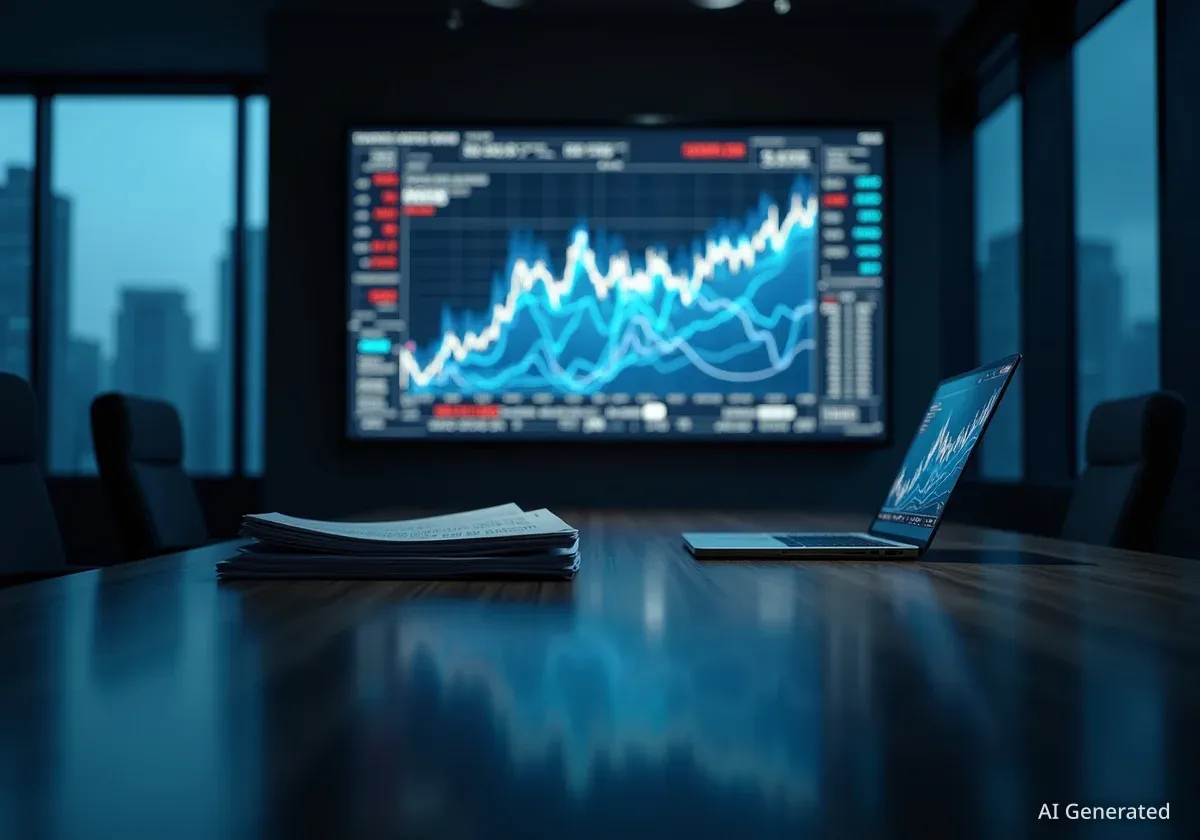A wave of caution is spreading across Wall Street as prominent analysts and investors begin to question the long-term viability of the artificial intelligence investment boom. Recent corporate financing deals and historical market parallels are fueling concerns about circular funding, debt-driven expansion, and the physical limitations of building out AI infrastructure.
While the market has shown resilience, with investors often buying on dips, a growing number of reports highlight potential risks. These include the enormous energy demands of data centers and the comparison to the late 1990s telecom bubble, which saw massive infrastructure investments lead to significant financial losses.
Key Takeaways
- Analysts are raising concerns about circular financing, where major AI players invest heavily in each other.
- Oracle's recent large bond deal signals a shift towards debt-fueled AI expansion, increasing financial risk.
- Parallels are being drawn to the dot-com era's "dark fiber" moment, where infrastructure build-out outpaced immediate demand.
- Physical constraints, such as the immense power required for data centers, are identified as a major challenge to continued growth.
- A small group of 41 AI-related stocks has driven the majority of the S&P 500's recent gains, creating market concentration risk.
Growing Skepticism Among Market Strategists
Recent market activity has prompted several high-profile analysts to publish reports examining the potential downsides of the current AI narrative. Steve Sosnick, chief strategist at Interactive Brokers, has drawn direct comparisons between today's AI spending and the fiber-optic cable rush of the late 1990s.
Sosnick pointed to the insular nature of AI spending, where a few large companies are both the primary customers and suppliers within the ecosystem. The so-called hyperscalers—Microsoft, Amazon, Meta, and Alphabet—are the largest purchasers of Nvidia's chips. At the same time, Nvidia is a significant customer for companies like CoreWeave and Super Micro Computer.
"We’ve seen immense returns generated from the cash that has been invested, not necessarily in terms of bottom-line results at companies, but the market has seen the benefits," Sosnick stated in an interview. "But at some point, this has to translate into the bottom line."
His commentary echoes a historical lesson from the telecom bubble. While the expansion of internet bandwidth was eventually profitable, the returns did not materialize fast enough to prevent bankruptcies for companies like Global Crossing in 2002. The concern is that a similar dynamic could play out with AI infrastructure.
The "Dark Fiber" Parallel
The term "dark fiber" refers to unused fiber-optic cable infrastructure. During the dot-com bubble, companies invested billions to lay vast networks of cables based on optimistic projections of internet traffic. When that traffic didn't grow as quickly as expected, much of the fiber remained unused, or "dark," leading to corporate failures and significant investor losses.
Financial and Physical Constraints Emerge
The discussion around AI risks has expanded beyond historical parallels to include tangible financial and physical limitations. A pivotal moment came with Oracle's recent large bond deal to help finance its commitments with OpenAI. This move marked a departure from the previous trend where tech giants funded AI expansion primarily through their substantial cash flows.
This shift to debt financing has raised alarms about a potential "arms race" where companies feel pressured to borrow heavily to keep pace, increasing systemic financial risk. David Einhorn, founder of Greenlight Capital, warned that unchecked spending on data centers could result in the destruction of enormous amounts of capital.
Market Concentration and AI's Impact
According to a report from J.P. Morgan Asset Management's Michael Cembalest, a group of just 41 stocks linked to artificial intelligence has been responsible for 75% of the S&P 500's advance since ChatGPT's launch in November 2022. This same group accounted for 80% of corporate earnings growth and 90% of capital spending growth.
Cembalest's report also highlighted the significant physical constraints facing the AI build-out. The aggressive need for power to run massive data centers is already contributing to higher electricity prices for consumers in some regions. This raises questions about whether the energy grid can support the exponential growth projected for AI.
Analysts Re-evaluate the Bear Case
Even firms with a generally optimistic view on AI are beginning to explore potential negative scenarios more seriously. A team of equity analysts at Barclays noted that while service-provider revenues and AI-related job postings continue to grow, the sheer scale and speed of the data-center expansion make it necessary to "kick the tires on the bear case."
The Barclays team, led by Venu Krishna, outlined several risk factors:
- Power Constraints: The possibility that energy limitations could slow or halt the construction of new data centers.
- Stagnating Models: A scenario where AI models stop improving, reducing the need for more powerful hardware.
- Efficiency Gains: Newfound efficiencies in AI processing could lead to excess data-center capacity and underutilization of expensive infrastructure.
This last point directly references the "dark fiber" moment. The fear is that a rapid increase in efficiency could leave billions of dollars of specialized hardware underused, turning data centers into stranded assets.
Signs of a Stalling Trade
Beyond analyst reports, some market indicators suggest the AI trade may be losing momentum. Shares of Nvidia, the leading designer of AI chips, have traded sideways for nearly two months. While the stock has seen incredible gains, its recent performance indicates a period of consolidation or potential fatigue among investors.
On the technical side, some AI-related funds have shown signs of being overextended. The Global X Artificial Intelligence & Technology ETF (AIQ) recently recorded a 14-day relative-strength index (RSI) of 82.41, its most overbought level since its inception. An RSI above 70 is typically considered overbought, suggesting a potential pullback.
Even key figures within the industry have acknowledged the hype. Last year, OpenAI CEO Sam Altman himself referred to the intense excitement around AI as a "bubble." While the technology's long-term potential remains significant, the short-term market enthusiasm is now being met with a healthy dose of analytical scrutiny and risk assessment from Wall Street's most seasoned observers.





